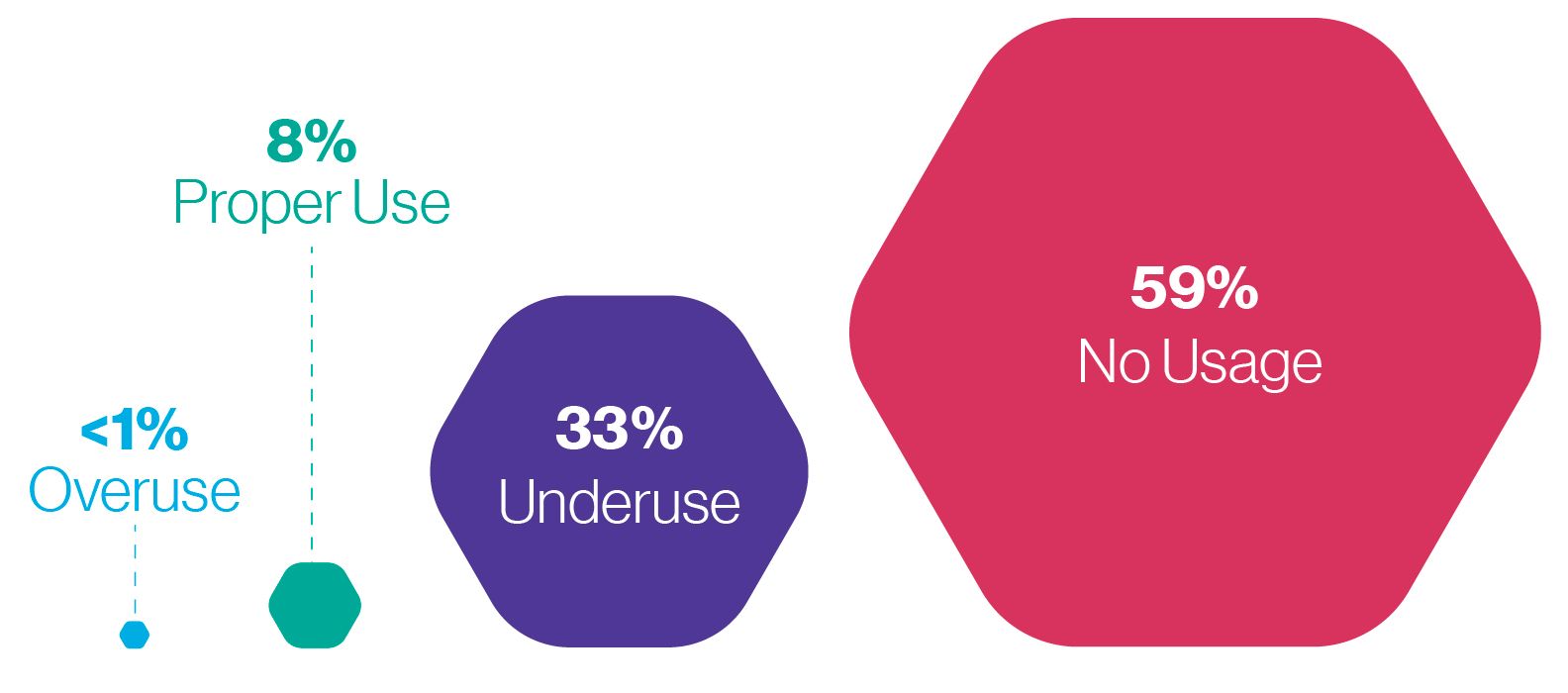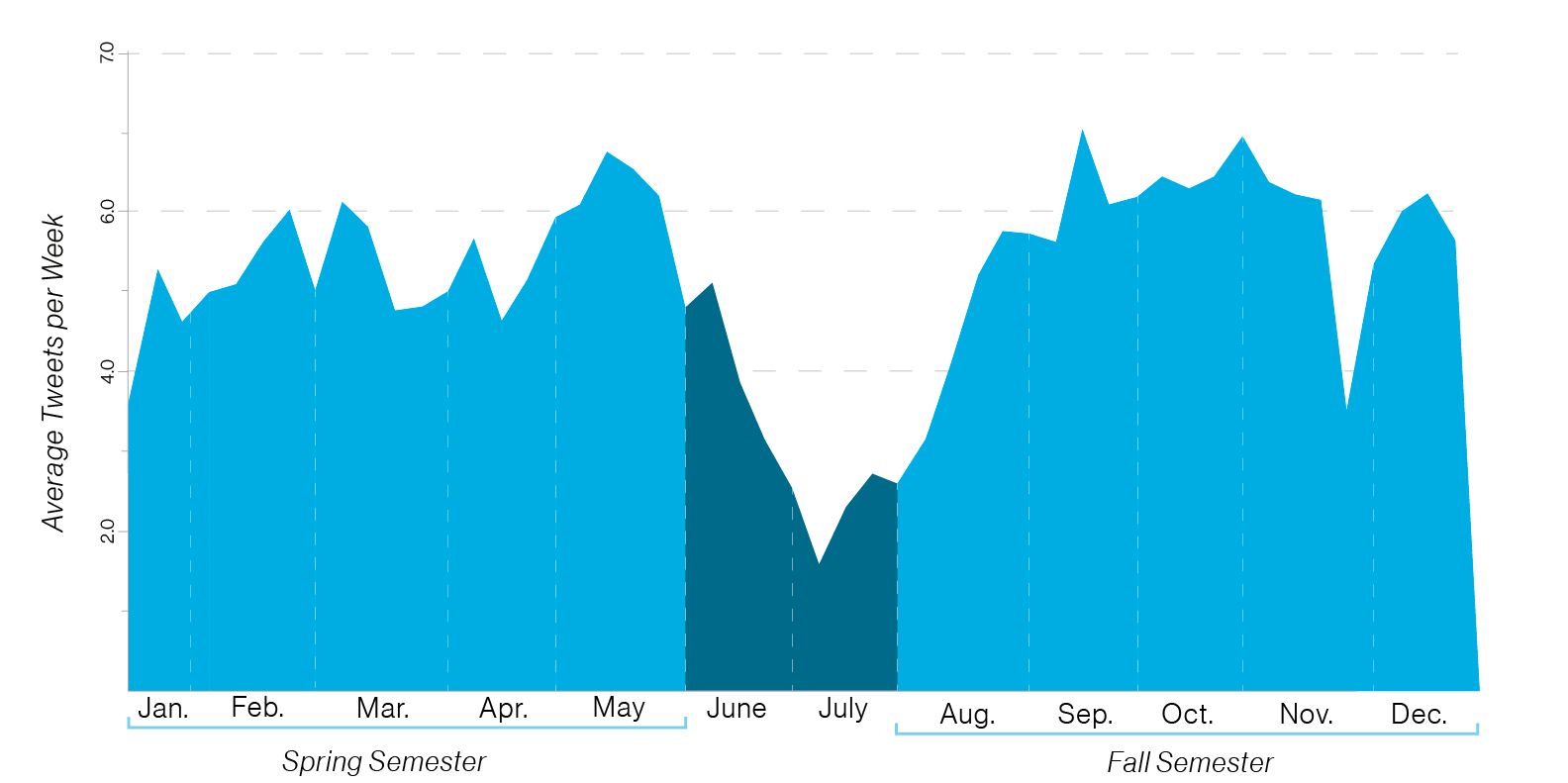On Twitter, consistency is king. Will your schools take the throne?
There’s a problem with the way most school districts are using social media: a lack of consistency.

The majority of districts aren't posting at all, many are sharing with seemingly little rhyme or reason, and a few are overwhelming their audiences with unnecessary minute-by-minute updates. Instead of training stakeholders to seek out their social media accounts for information, many school leaders act only reactively with their usage. Some may hesitate at the difficult task of bending to the world, but the reality is that you can bend the world to you instead. By consistently sharing information that’s relevant to your followers through the channels where you feel the most in control, you can shape the narrative surrounding your schools, provide meaningful information, and grow support among your district’s stakeholders and advocates.
Districts' Twitter Usage in 2017

To understand the frequency of school social media posts, we focused on Twitter, which provides rich data about the timing and quantity of user posts. Twitter currently has 336 million monthly active users and 50 million of those are in the U.S. alone. With 500 million tweets sent each day and about 1/4th of all American adults actively using Twitter, the platform has become a major source for news, a community builder, and, of course, a culture changer.
It’s no surprise, then, that 68% of companies with 100 or more employees use the platform specifically for marketing. And while Twitter’s overwhelming number of active users could scare some away from vying for a voice on the site, it’s important to note that, on average, every one of those users has 707 followers. These numbers add up quickly when you consider how many stakeholders your district already has and how many followers are waiting to read and share their posts.
In private sector marketing, it’s standard to post on Twitter 3-5 times a day for large brands, and 2-3 times a day for smaller brands. This would mean that a school properly using the platform should be Tweeting between 730 and 1,095 times a year. However, we found that only a small fraction of schools, about 8%, actually hit these targets. Most weren’t even close.
Our other major finding on consistency is that school Twitter usage corresponds directly with a district’s calendar. We see them posting with full energy at the beginning of the school year, taking a break around Thanksgiving, posting sporadically during the spring, and often ignoring their Twitter pages altogether during summer break.
Average Tweets by Week in 2017

It makes sense that districts would post less when students aren’t on campus. Unfortunately, the times when schools go on break are often the same times parents are making enrollment choices about their children. Summer break is also when new teachers look for jobs, and leveraging Twitter and other social media for recruiting has become essential, especially with millennials. (Read more in our article “Ramp Up Your Recruitment”)
Twitter’s business website (business.twitter.com) also highlights ways the platform is adapting to cultural demand, citing that video views alone have grown a whopping 220 times what they were just one year ago. In fact, it’s important to note that video content posted to Twitter is 6 times more likely to be shared than posts with just photos, so you may want to film that art fair or trophy ceremony instead of just snapping pictures.
The company site also claims that, “...because people are in a discovery mindset when they’re on Twitter, your brand or business is likely to leave a lasting impression.” Twitter even provides a helpful list of the ways it can be leveraged to serve companies, and each item can definitely be applied to schools:
- Discover what’s happening right now.
- Grow your brand awareness.
- Provide timely customer service.
- Connect with potential customers, brand advocates, and influencers.
Looking at our findings, it’s clear that school districts should strategize ways to frequently post thoughtful, shareable content and maintain their social presence even when school isn’t in session. This can be as simple as creating a bank of content for future-scheduled posts throughout the year. Save those photos or video clips of the state spelling bee, the football championship, or the award-winning dance line performance—make sure you can share what your schools and students are all about, especially during pushes for enrollment (or, nudge nudge, when recruiting new teachers).

SchoolCEO is free for K-12 school leaders. Subscribe below to stay connected with us!

